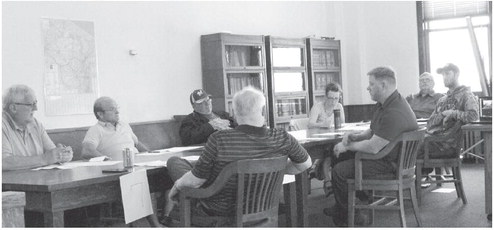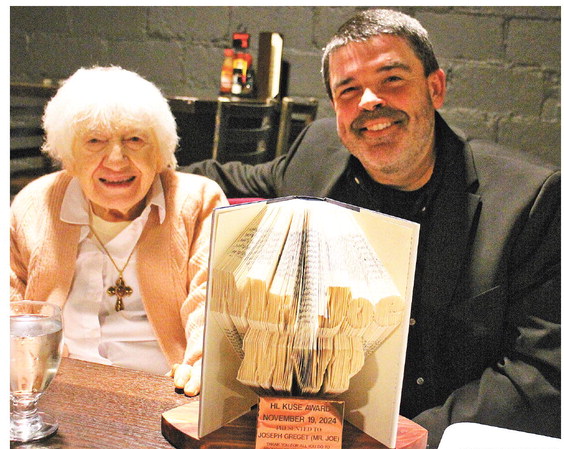County rejects offer for additional shoreline at Chelsea Lake


Property owner say berms should be considered part of the dam
Taylor County will proceed with the replacement of the Chelsea Dam without accepting an offer for additional shoreline from adjacent property owners.
A group of lake property owners approached the county executive and forestry committees with a proposal to transfer ownership of a section of shoreline containing berms. The intent would be for the county to take over ownership and maintenance of the berms.
At the June 5 forestry committee meeting, the property owners presented their offer to transfer the land and also requested the county file an application with the Department of Natural Resources to adjust the lake level with the hope of increasing. The county forestry department oversees the three county-owned dams.
Both of the property owner requests are related to residents’ displeasure over the lake elevation. Water level in Chelsea Lake is set an elevation of 1,531 feet with that number being set based on the holding capacity of the dam and a dam failure analysis.
Property owner Ron Mayer, said he felt the berms were constructed on the shoreline without their permission. “They were constructed and owned by others,” Mayer said, noting since the berms are a factor in determining the lake water level they should have been included when the county formally took ownership of the dam in 2017. He said the county should accept a deed transfer of the property and then bring the berms up to current design standards. Mayer said he feels work on Chelsea Lake is incomplete without addressing the matter of the berms.
“The county doesn’t own it and have never owned it,” said committee member Gene Knoll of the berms along the lake.
Mayer disagreed and said the dam was all constructed in one piece including the berms. He said the transfer of the berms was on the docket for the June 2017 county board meeting where the county took ownership of the dam. However at that meeting, the board did not take ownership of the berms.
Addressing the request to spend $500 for the DNR to review the lake level, forest administrator Jake Walcisak, said the chances of the state allowing the water level to be increased four to six inches is “slim to none.”
He noted that if it had not been for the county pushing to keep it at 1,531 feet, it would be even lower. The DNR had originally wanted the lake a foot below its current level — which would have been about two feet below the historic levels. He cited a June 3 conversation with Keith Patrick and Mark Stevenson of the DNR who confirmed that the lake level would be unlikely to change.
In speaking to the request for the county to take the land, Walcisak noted that with no plans or any sort of engineering on file, the DNR considers the berms to be part of the shoreline with the property owners responsible for their upkeep like any shoreline property owner would be.
Walcisak cautioned that if the county were to take ownership of the berms and seek to use them in establishing the lake level, it would require a new failure analysis and mean redoing the entire design of the dam. He noted the county has already spent $41,000 in design and engineering fees. “If we went to redesign now we aren’t saving any money,” he said.
The entire cost of the project is expected to be about $240,000 with the county hoping to receive a grant that could cover up to half of the cost. The county is expecting to receive word about the grants this month.
“You guys came in at the 11th hour,” said committee chairman Chuck Zenner. “We are days away from finding if we will get the grant and this could jeopardize that grant,” he said.
Walcisak said it was closer to coming into the project on the 11th hour and 50 minutes.
Committee member Mike Bub agreed with not pursuing increasing the water level. “We spent over a year to the maximum level,” Bub said, adding that he did not think it was a wise investment to pursue it further.
Walcisak said one of the major limiting factors on the lake level is the town of Westboro road that runs at the south end of the lake and the potential for the water to erode the road base.
“I don’t think the town of Wesbtoro wants to put a new road through there,” Knoll said.
Bub also noted that a significant change like the addition of the berms would have the entire project going back to the full county board for action. He said when the county board first talked about the dam, the estimates were between $45,000 and $50,000 for repairs to it. He said that when the dam is completed county taxpayers will have spent $240,000 on it. While a grant could cover half that amount, if the county is unsuccessful in getting the grant, they are still committed to the project.
“While Chelsea Lake is a valuable asset, at some point we have to say enough is enough,” Bub said.
Zenner also raised concerns that with the state looking at ways to cut costs due to reduced tax revenue as a result of the COVID-19 pandemic, the funding for the grant program could be reduced or taken away entirely, putting future ability to get grants in doubt.
“It is playing with fire,” Bub said. Not to mention the uncertainty of if the full county board would approve spending more money on it.
Walcisak also noted that Mayer owned a small portion of the berm and that the larger section is owned by Jim and Kris Gray. Kris Gray said their concern is what happens if the berm fails and if they would then be liable.
Walcisak said that unless it failed due to their negligence it would be like any other piece of shoreline. While there would be pressure from other lake property owners to have it repaired, there would not be liability for it.
There is also the real risk that if the issue was brought back to the county board, supervisors could just easily vote to cut the county’s loses and vote to remove the dam entirely. The state would cover 100% of the cost of a dam removal. “Then nobody would be happy,” Knoll said.
“If it goes back to the county board, the board will turn it down,” said county board chairman Jim Metz predicting the outcome of a potential vote.
“If you went back to the county board right now, it would be a very close vote to take the dam out,” Bub said.
“We don’t want it to be construed that we are throwing a wrench in the works,” Mayer said.
Another option that was suggested is the formation of a lake district. This is a taxing entity that is able to own land and apply for state grants. It differs from a lake association because a lake association is a voluntary organization.
After more than an hour of discussion committee members voted to continue on with the planned replacement of the Chelsea Dam without accepting land from the property owners.


